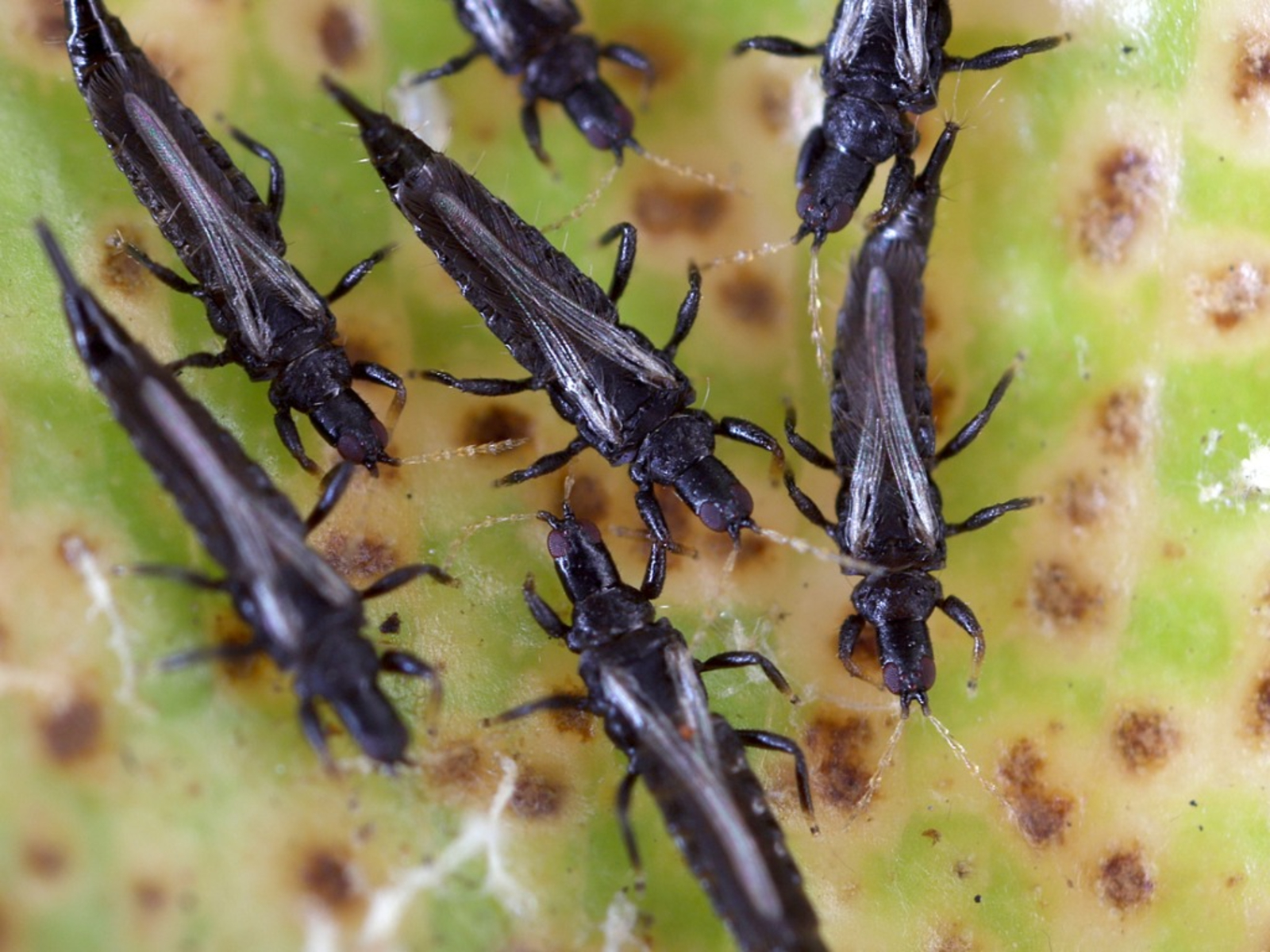Western Thrips Or Black Thrips To Cross Economic Threshold Level
Aphids, Jassids, Whiteflies and thrips are some of the most common pests attacking chilli crops causing severe damage to the crop if not controlled in time, however these pests were under economic threshold level and have been controlled with recommended pesticides, but in recent times, the chilli crop is susceptible to attack by a sucking pest which is similar to normal thrips but is black in colour called western thrips/ black thrips and turned out to be a nuisance to chilli farmers.
Farmers are using similar pesticide formulations to that of common thrips even to control black thrips but the outcome of it was zero,in addition these thrips are giving rise to a virus called bud necrosis and may give rise to several other viral diseases if not controlled in time, hence it is necessary to take regulatory measures to avoid complete damage of seasons crop.

Western Thrips / Black Thrips
Western Thrips Pest Identification:
The natural population of the western thrips exist in black colour, adults are less than 2mm with fully developed wings which is native to North America.
ALSO READ: WHAT IS INTEGRATED PEST MANAGEMENT AND HOW EFFECTIVE IT IS IN PEST CONTROL?
Damage Caused By Black Thrips Or Western Thrips:
Black thrips cause damage to the crops by feeding on crops thus sucking the sap from leaves, flowers and fruits, black thrips are observed mostly in flowers and leaves, Adults lay eggs inside flowers and leaves thus causing physical damage, leaves turn blackish, it may even lead to 100% loss to crop yield if not controlled in time.
It is always a prevention than cure that works when it comes to economic pests like black thrips, below are a few Do’s and Don'ts that may help in reducing the pest population.
DO’S:
-
Blue sticky traps caught more thrips than yellow sticky traps when used to monitor western flower thrips populations. Hence it is always recommended to install blue sticky traps as they not only help in monitoring but also help in controlling the adult population.
-
Traps are not efficient in monitoring damage to crops. One of the most important natural enemies of western flower thrips that is recommended by N.G Ranga agriculture university is Beauveria bassiana which acts as a biocontrol agent and a fungal species, When the spores of the fungus come into contact with the insect’s skin, they spread into the hemolymph (blood), which they feed on. This causes small insects like thrips to die within three to five days , However it is always advised to use the biocontrol agents in a recommended period (Optimal conditions) since the fungus thrives well only in low temperatures.
-
Western thrips are known to spread bud necrosis and tomato spotted wilt virus, Cultivars that are resistant to tomato spotted wilt virus and bud necrotic spot virus with acceptable yield and quality can also decrease the effect of thrips-transmitted viruses.
DON’TS:
-
Farmers are using various pesticides to control the pests, over usage of synthetic pyrethroids (Pesticides) are resulting in resistance of pests against pesticides and the population number is doubling every single day causing severe crop losses. Hence it is recommended not to spray synthetic pyrethroids for controlling pest populations.
-
The three major problems involving the management of thrips include: Thrips mostly hide within the flowers or folded leaves also lay eggs inside the leaves where insecticide sprays do not reach, Secondly thrips gain resistance quickly against pesticides, Therefore, rotating insecticides according to the mode of action is important.
-
It is also recommended not to use organophosphates for controlling western thrips.
-
Increased thrips damage has been associated with over usage of nitrogen fertilizers, since over usage of nitrogen fertilizer results in more vegetative growth making the crop susceptible to the pests, hence it is always recommended to use less amount of nitrogen fertilizers.
Recommended Management Approaches:
It is always recommended to start the control with neem oil, since the neem oil controls egg population, spraying neem oil 1 litre per acre is advisable
Fipronil 80% WG 80-100 grams/ acre mixed with 200 litres of water is recommended to spray for one acre of land to reduce the population
ALSO READ: ROLE OF HUMIC ACID IN IMPROVING SOIL STRUCTURE AND SOIL MICROBIAL ACTIVITY
Spraying Fipronil 40% WG + Imidacloprid 40% WG @ 80 -100 grams mixed in 200 litres of water is recommended per acre of land, this spray may help in reducing nymph population
Spraying Cyantraniliprole 240 ml mixed with 200 litres of water/acre
Spraying 80 ML Spinosad + 600ML ( 10,000 PPM ) Neem oil mixed with 200 litres of water per acre of land may reduce the pest population
Rotating insecticides according to the mode of action is important. The above mentioned are some of the insecticides that may help in reducing the pest population, using these insecticides in a rotation in regular intervals may control black thrips. For more information about thrips and its management in different crops, download the Jai Ho Kisan app. Jai Ho Kisan is the mobile application envisioned to help farmers in getting better yields., thus providing crop advisory, daily market rates, information about loans and schemes and many other valuable information related to farming.